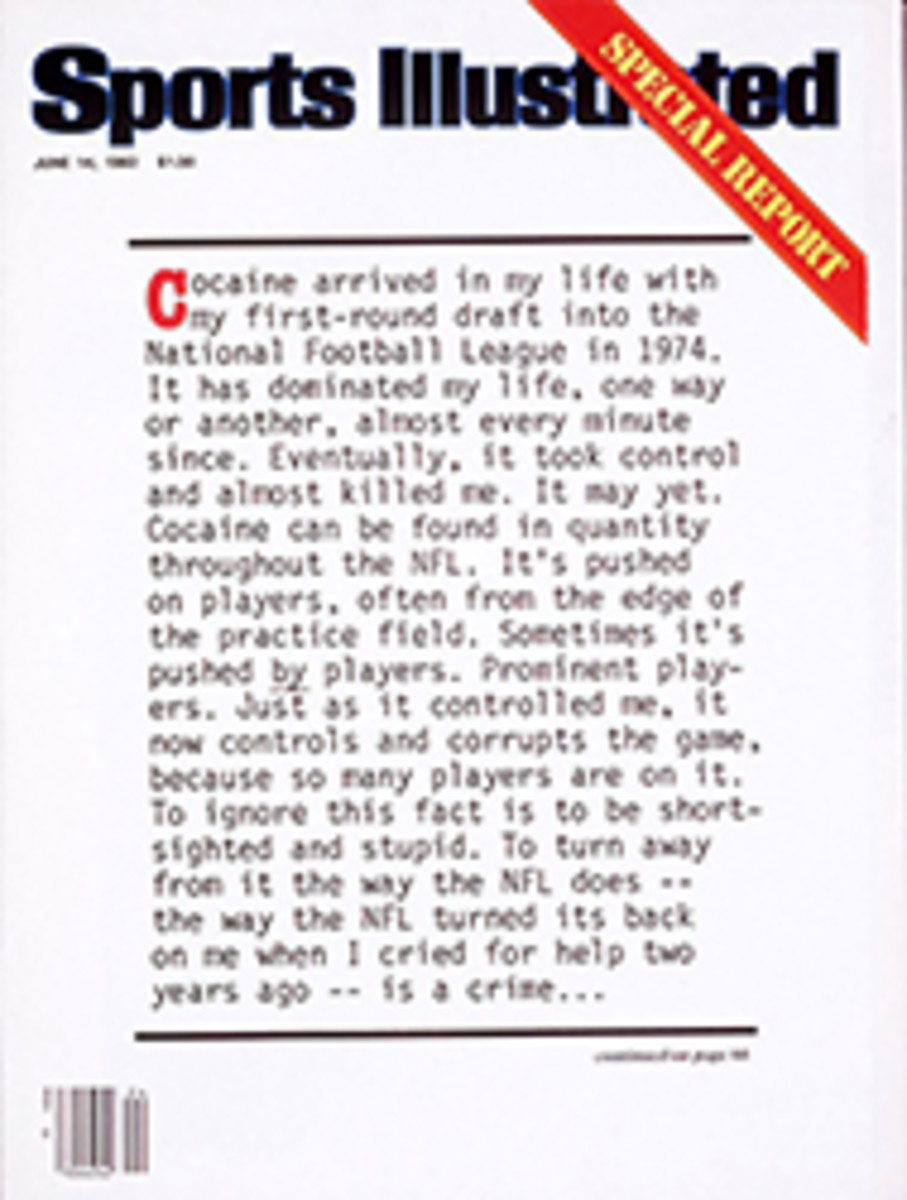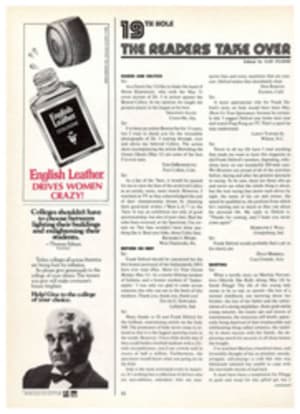
THIS GLOVE MADE A NAME FOR ITSELF AND WAS RETIRED WHILE STILL A STAR
I found it in a rain puddle, half a world away from my hometown of Minneapolis. I was in the fourth grade and my family was spending two years on the island of Kwajalein, in the Marshall archipelago in the west central Pacific. The glove had probably been dropped by one of the Hawaiian laborers employed in U.S. military support services on his way home from a postsoftball-game beer party. It was already about five years old when it was lost, but the night in the puddle had added another five.
I fished it out, and tried it on wet. It was huge. My fingers barely reached into the finger compartments, and the webbing flopped crazily. I took the glove home and let it dry without oiling it, aging the leather several more years.
But I fell in love with the glove anyway. It was black, or had been until the rain turned it a dark gray. Everyone I knew had a standard tan signature model, but now I had an anonymous, bad-guy, down-to-business black glove.
It was so well broken in from use and abuse that it folded in half instead of maintaining a well-defined pocket. This impressed me, because I had never succeeded in breaking in a glove properly. Even though my hand was too small to control the glove, I found (through much practice with various rocks) that if I aimed it accurately, the force of an object hitting the webbing would close the pocket. I learned to capture balls rather than catch them: With an assist from my throwing hand and a quick turn of the glove I could hold my quarry.
I entered Little League baseball the next year with the old piece of leather as my only item of equipment. I did tolerably well, too, despite the sideways glances I always got from coaches because of my huge accessory and strange catching style. They never said anything, though, probably feeling sorry for my family's apparent poverty, or fearing that the glove was part of an important family tradition.
But it was never really suited to catching baseballs, as I found when we moved back to Minnesota and I entered the hard-throwing kill-to-win world of mainland Little League ball. There you threw the ball as hard as you could every time, and if the kid who caught it winced you threw it harder the next.
The trouble was that my glove had hardly any padding left, most of it having rotted away. I became quite adept at flexing my wrist just enough to stop an incoming missile on the meaty thumb section of the glove and then trapping it in the webbing. But when this maneuver failed and I caught one in the threadbare pocket, all hell broke loose in my hand and I gritted my teeth with each subsequent catch. My coach and his two sons knew of my predicament, and, when pointed remarks failed to persuade me to abandon my old companion, they took turns throwing to me to "loosen up." I retaliated by placing a small sponge in my palm inside the glove.
A more traumatic difficulty cropped up my third year in hardball. The laces in my glove had become brittle with age, and every so often one would yield to the force of a catch, allowing the ball a free path to my face. I finally replaced the laces with new rawhide, but I never got them quite tight enough and occasionally the ball got through.
I retired from hardball before senior high, where I'm sure the coach would have banned my old friend and liability. My arena became the less structured but certainly no less intense game of neighborhood softball. I was a runner by nature, and, although short, could chase down almost anything hit to my field. My glove responded like an old hunting dog returned to the woods, snatching up whatever it could scent.
The glove finally, belatedly, earned a nickname for itself. My good friend Greg Ingraham—"Ings," "Iggy," or simply "Ig" to those who know him best—seized on its peculiar color and awesome jawlike capturing ability and coined the name "The Rat Trap."
The Trap gained in repute from then on. Opposing players would lay claim to it as soon as I left the field. Nobody wielded it with my time-tested prowess, but they eventually learned to surrender all voluntary control to its powers.
I played with the Trap until I was 24, 14 years after our paths crossed. And I would probably still be playing with it but for one spectacular catch. I was in centerfield in a coeducational softball league and we were up against a heavy-hitting team. I was deep and shaded a little to left when their slugger belted one so hard and high that I knew right away it was over the leftfielder's head. I sprinted out to where I thought the ball would land and was surprised to see I might have a play on it. I lengthened my strides but at the last second saw it was going past me. I took one last leaping stride and, as the ball flew past, reached up with the Trap. It caught up to the ball from behind with a downward swooping snatch and, as I came down, I drew the glove and ball in to my chest.
As I turned to trot in with my prey, I saw the slugger casually rounding third, sure he had hit a home run, which it would have been in a fenced park. His teammates were on their feet cheering wildly for him, or so he thought until he reached home and they began pointing to me carrying the ball and insisting that I had caught it. He just shook his head in disbelief.
It was such a monumental feat that I felt the Rat Trap had earned its retirement. After that game, I laid it to rest on a high shelf and bought an expensive preformed-pocket fielder's glove.
Funny thing, though. Now I've kind of lost interest in the game.
ILLUSTRATION
STEVE BRODNER

